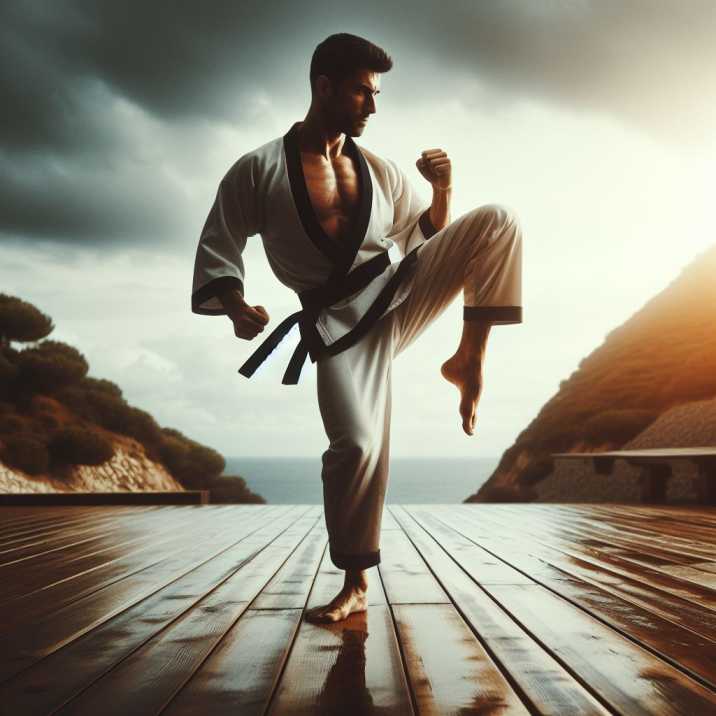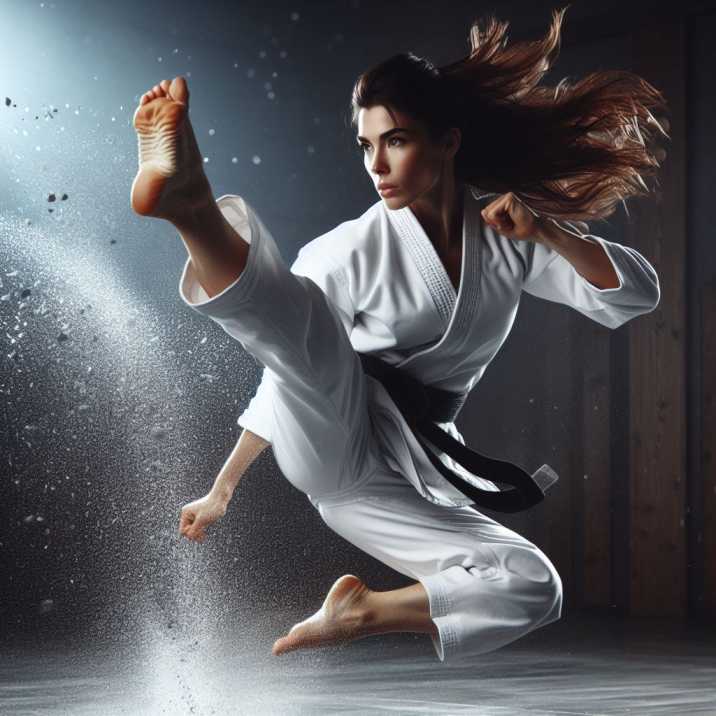Introduction:
Table of Contents
Balancing Drills for Sharpening Reaction Time in Martial Arts
In the dynamic world of martial arts, precision and agility are paramount. A practitioner’s ability to react swiftly to opponents’ movements can make all the difference between victory and defeat. One crucial aspect of honing this skill is through balancing drills. These exercises not only improve physical stability but also enhance mental focus and reaction time. In this comprehensive guide, we delve into seven effective balancing drills tailored to boost your performance in martial arts.
One-Legged Stance:
Begin by standing on one leg with the other raised slightly off the ground. Maintain a straight posture and focus on a fixed point ahead. Hold this position for 30 seconds to a minute before switching legs. This drill enhances core stability and strengthens the muscles required for quick adjustments in stance during combat.

Balance Board Exercises:
Utilizing a balance board, engage in a series of movements while maintaining equilibrium. This could include squats, lunges, or rotational exercises. The instability of the board challenges your proprioception and improves overall balance, crucial for evasive maneuvers and swift strikes in martial arts.
Partner Drills:
Work with a partner to enhance both balance and reaction time. Stand facing each other in a fighting stance, maintaining a slight distance. Your partner will randomly push or pull your arms or torso, prompting you to adjust your balance and respond swiftly. This drill simulates the unpredictability of real combat scenarios, refining your reflexes.
Dynamic Kicking Drills:
Incorporate dynamic kicking drills into your training regimen to improve balance and coordination while executing various strikes. Practice kicking while standing on one leg or transitioning between different stances. Focus on maintaining stability throughout each movement, enhancing your ability to deliver powerful and precise strikes with minimal telegraphing.

Agility Ladder Drills:
Utilize an agility ladder to perform a variety of footwork exercises. From basic forward-backward movements to intricate lateral shuffles and crossover steps, these drills enhance foot speed, coordination, and balance. Incorporating agility ladder drills into your routine translates to improved mobility and agility during sparring sessions.
Reaction Ball Training:
Integrate reaction ball training to sharpen reflexes and hand-eye coordination. Bounce a reaction ball against a wall and react swiftly to catch or deflect it as it rebounds unpredictably. This drill challenges your reaction time and spatial awareness, crucial skills for effectively countering opponents’ attacks in martial arts.
Blindfolded Balance:
Engage in balance exercises while blindfolded to heighten proprioception and reliance on other sensory cues. Perform simple tasks such as walking, pivoting, or striking while focusing on maintaining stability without visual input. This drill enhances spatial awareness and adaptability, preparing you to react effectively even in disorienting situations.
Conclusion:
Mastering the art of balancing is indispensable for martial artists seeking to elevate their performance. By incorporating these seven balancing drills into your training routine, you can significantly enhance your reaction time, agility, and overall combat readiness. Remember, consistent practice and dedication are key to unlocking your full potential in martial arts.
FAQs:
- How do balancing drills improve reaction time in martial arts? Balancing drills enhance proprioception, core stability, and coordination, essential components for swift and precise reactions during combat situations.
- Can beginners benefit from balancing drills? Absolutely! Balancing drills are suitable for practitioners of all levels and can significantly improve fundamental skills crucial for martial arts proficiency.
- Are there specific balancing drills for different martial arts disciplines? While the fundamentals of balance apply universally, certain drills may be tailored to specific techniques or strategies employed in various martial arts styles.
- How frequently should balancing drills be practiced? Consistent practice is key. Aim to incorporate balancing drills into your training regimen several times a week to see noticeable improvements in reaction time and stability.
- Are there any safety precautions to consider when performing balancing drills? Ensure proper warm-up and use supportive equipment when necessary. Start with simpler drills and gradually progress to more challenging exercises to minimize the risk of injury.


